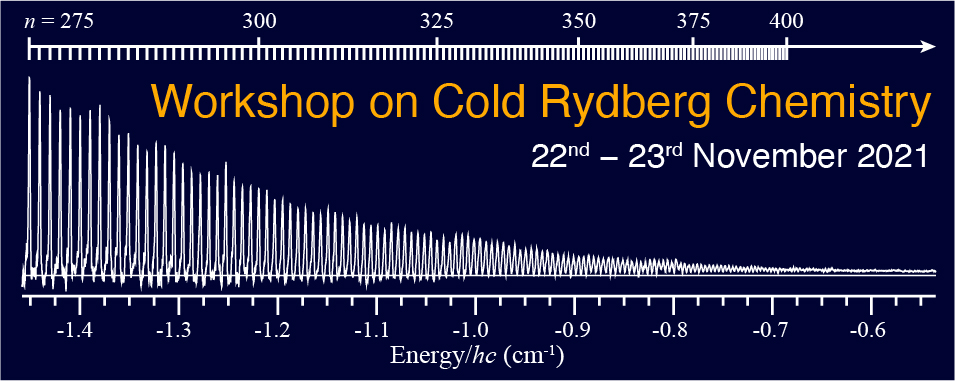Resonant mm-wave fields in the range from 50 to 100 GHz drive f ⟶ g transitions in a state-selected nf(2) Rydberg gas of NO. This transformation produces a clear signature in the selected field ionization (SFI) spectrum and dramatically increases the early time intensity of high-Rydberg resonances in the SFI-detected high-Rydberg spectrum. We associate these enhanced features with a decrease...
We predict the existence of a universal class of ultralong-range Rydberg molecular states whose vibrational spectra form trimmed Rydberg series. A dressed ion-pair model captures the physical origin of these exotic molecules, accurately predicts their properties, and reveals features of ultralong-range Rydberg molecules and heavy Rydberg states with a surprisingly small Rydberg constant. The...
In a recent breakthrough in first-principles calculations of two-electron systems, Patkóš, Yerokhin and Pachucki [PRA 103, 042809 (2021)] have performed the first complete calculation of the Lamb shift of the helium $2\,^3\mathrm{S}_1$ and $2\,^3\mathrm{P}_J$ triplet states up to the term in $\alpha^7 m$. Whereas their theoretical result of the frequency of the $2\,^3\mathrm{P}\leftarrow...
Förster resonance energy transfer (FRET) refers to non-radiative exchange of energy between two particles, typically described in terms of resonant dipole-dipole interaction. When the separation between the particles becomes comparable to their size, however, the dipole approximation breaks down. This is expected for Rydberg atoms which possess large dipole moments and are thus ideal for the...
The attention to the chemical compounds of noble gases Ng is dictated by the fundamental interest in the nature of the bonding of these inert atoms. Moreover, the bonding motifs which make the neutral compounds of noble gases stable can provide stability of the variety of the new currently unexpected substances of other elements as well. The chemical inertness increases for lighter Ng atoms....
The rich internal structure and intrinsic dipolar interactions possessed by polar molecules makes them a promising system for exploring quantum chemistry, quantum computation and quantum simulation. However, to fully realise their potential in these areas, single-site control and detection of molecules is desirable. Such control is natively realised using optical tweezer arrays to confine the...

